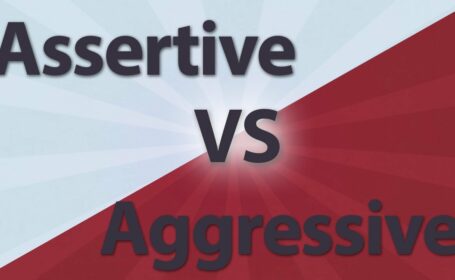

The High Price of a Bad Hire: Protecting Your Business and Manpower
- trienkhaiweb
- 8 March, 2024
- 0 Comments
In the fast-paced world of business, hiring decisions can often feel rushed. Sometimes, the pressure to fill a vacancy leads to overlooking red flags and settling for a less-than-ideal candidate. But this seemingly small compromise can have enormous consequences. Understanding the true cost of a bad hire is essential to optimize your manpower strategies and safeguard both your resources and your bottom line.
The Steep Financial Toll
The monetary impact of poor hiring practices is significant. The Harvard Business Review reports that a staggering 80% of employee turnover is directly linked to flawed hiring choices. What’s more, the losses go far beyond just the initial recruitment expenses. Here’s the breakdown of how a bad hire can drain your company’s finances:
- Manpower Disruption and Morale: An underperforming employee can have a ripple effect on the entire team. Low morale, negativity, and strained teamwork can hurt overall productivity.
- Customer Dissatisfaction: Poor performance and lack of efficiency from a bad hire can translate to displeased clients and lost business. Maintaining your customer base with excellent service is essential, and a weak link in your manpower chain can cause irreparable harm.
- The Manpower Replacement Cycle: Finding the right person after a bad hire takes time – an average of 5 weeks for staff and 7.5 for management roles. This leaves you burdened with unfulfilled tasks, lost revenue, and even greater stress on your existing manpower.
- Wasted Resources: The recruitment process requires significant investment. From advertising costs to training expenses, a bad hire is a drain on resources that could have been used to empower exceptional manpower choices. Some studies estimate that a single bad hire can cost upwards of $25,000!

The Bigger Picture: Protecting Your Manpower Investment
The financial costs are just the tip of the iceberg. A bad hire can also jeopardize your company’s culture and reputation. A negative, underperforming employee can undermine your entire manpower infrastructure. This intangible yet critical damage can lead to lost opportunities and a decline in overall company success.
Strategies for Wise Manpower Decisions
The good news is that minimizing the risk of bad hires is achievable with careful planning and refined strategies:
- Precise Job Descriptions: A clearly defined job description is your first line of defense, attracting candidates aligned with your needs and making your manpower expectations transparent.
- Resource Diversification: Don’t just rely on one hiring channel. Utilize reputable recruitment agencies, employee referrals, and varied job boards to cast a wider net and increase your chances of finding the ideal manpower addition.
- Technology Integration: Leverage tools like candidate assessment platforms to gain a deeper understanding of applicants’ skills and potential fit within your company culture.

The Takeaway
A bad hire is never inevitable. By recognizing the immense costs – financial, operational, and cultural – associated with poor manpower choices, you position your business to make smart recruitment decisions. Prioritizing thoughtful recruitment is an investment in your company’s future and the key to building a high-performing team.
Related articles
11 Universal Truths That Fuel Successful Research in Manpower Management
In today’s rapidly evolving business landscape, staying ahead of the curve requires a commitment to ongoing research and analysis. This is especially true in the field of manpower management, where understanding trends and adapting to change is crucial for success. Whether you’re a seasoned HR professional or a business leader seeking to optimize your workforce,…
17 Essential Management Skills for Success
The business landscape is constantly evolving, and 2025 promises to bring new challenges and opportunities for managers across all industries. While there’s no magic formula for becoming a great leader, cultivating a strong set of management skills is crucial for navigating the complexities of the modern workplace. This article, brought to you by Quinn Vietnam…
20 Qualities of a True Leader in the Manpower Industry
Leadership in the manpower industry requires a unique blend of skills and attributes. At Quinn Vietnam Manpower, we recognize the importance of strong leadership in driving success for our clients and partners. As we move into 2025, the demands on leaders are evolving, requiring adaptability, vision, and a deep understanding of the changing dynamics of…
Aligning Purpose and Objectives for Manpower Success
In the dynamic landscape of manpower management in 2025, understanding the difference between purpose and objectives is crucial for organizational success. Quinn Vietnam Manpower recognizes that a clear articulation of purpose and well-defined objectives are essential for driving performance, fostering employee engagement, and achieving strategic goals. This article delves into the critical distinction between purpose…
Assertive vs. Aggressive Leadership: Finding the Balance
In today’s dynamic business environment, effective leadership is crucial for success. Leaders need to be assertive to drive results, inspire their teams, and navigate challenges. However, there’s a fine line between assertiveness and aggression, and crossing it can create a toxic work environment, hinder productivity, and damage morale. This article, brought to you by Quinn…
Attracting Gen Z Talent: A Guide by Quinn Vietnam Manpower
The landscape of the workforce is constantly evolving, and in 2025, Generation Z (Gen Z) is a dominant force. Born after 1995, this generation brings a unique set of values, priorities, and expectations to the workplace. For Quinn Vietnam Manpower, understanding and adapting to these characteristics is crucial for attracting and retaining top talent. This…







